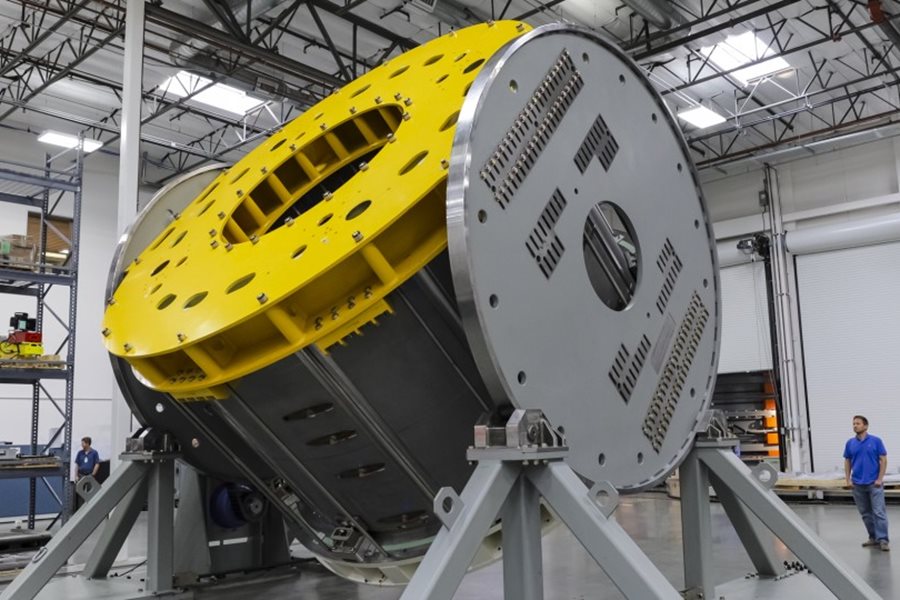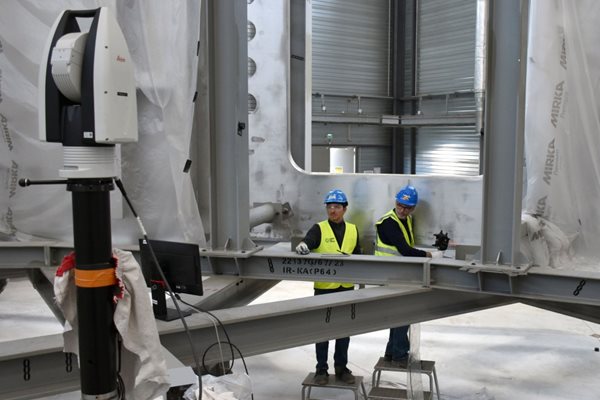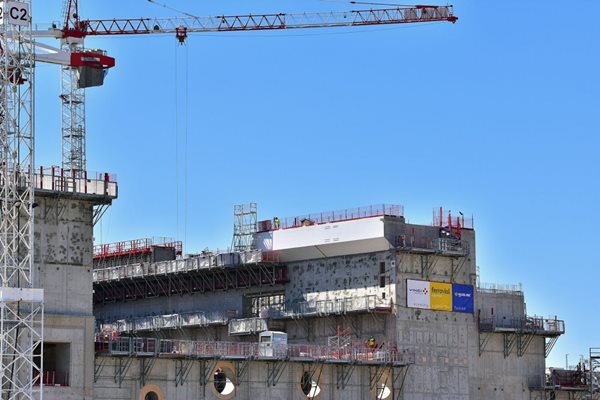
you're currently reading the news digest published from 29 Apr 2019 to 06 May 2019
featured3
video1
press3
featured
Central solenoid | Fabrication complete on first of 7 modules
When ITER begins operations in 2025, its plasma will be initiated by the largest stacked pulsed superconducting magnet ever built—the ITER central solenoid. The US ITER magnets team, based at Oak Ridge National Laboratory, is overseeing the fabrication of the central solenoid modules, support structures, and assembly tooling. A major milestone was reached this spring when vendor General Atomics completed fabrication of the first of seven modules. 'General Atomics has done an outstanding job to reach the difficult and important milestone of completing module 1 fabrication,' said Wayne Reiersen, US ITER Central Solenoid Magnets Team Leader. 'This is the culmination of an eight-year effort involving concurrent engineering of the module design, the creation of a facility in which these powerful superconducting magnets could be built and tested, the qualification of the manufacturing processes, and the building of this first-of-a-kind module.' The next step for the module is intensive testing to ensure that the component is ready to perform in the ITER Tokamak. The module has already completed the first Paschen voltage test as well as a global leak test. The central solenoid will be installed in the centre of the ITER machine, and will drive up to 45,000 amps of current in each module during plasma operation. Six modules will be stacked to form the 17-metre-tall solenoid, while the seventh module will serve as a spare. Fabrication of each module requires multiple fabrication steps spread out over 24 months. Click here to read the General Atomics press release. For a detailed view of the module manufacturing process, see 'Building the Heart of ITER' on the Oak Ridge National Laboratory YouTube channel.
Lower cylinder | Surveyed from every angle
Metrologists have performed the first 'as-built' survey of a completed ITER component—the cryostat lower cylinder—before it was wrapped for outside storage. At the completion of every major ITER component, metrological surveys will be performed to identify variations in the 'as-built' dimensions with respect to design. The information is critical to the final assembly of the component in the machine and to the connection of interfacing components and systems. Javier Fuentes leads the As-Built Data Management Working Group that manages the process. 'We need to assess the impact of a component's actual dimensions on interfacing systems and decide on a case-by-case basis if the systems can be used as designed or whether they require adaptation.' All measurement tasks require a fixed reference base (or datum) from which measurements can be made and calculated. For large-volume metrology applications, the reference base typically takes the form of a 3D coordinate system that consists of a collection of target "nests" and/or instrument stations that have known geometry and uncertainty. At the start of the as-built survey on the cryostat lower cylinder, which took place in March, metrology experts placed 53 fixed nests, also called 'fiducials' or 'target points,' inside the structure and established the fixed points for laser tracker stations. The stations then served as a reference base for hand-held laser scanners. Equipped with calibrated cameras, the hand-held laser scanners can measure the exact distance to the scanned object and place it within the network of known coordinates. Operators used laser scanners to conduct not only spot measurements but also complete sweeps of large areas of the lower cylinder's surface. Metrologists also collected information on 'drifting'—or dimensional changes due to the thermal expansion or contraction of materials. Eight sensors were distributed on the inner shell of the lower cylinder to record temperature, and scanner measurements were automatically adjusted to compensate for deviations from the reference temperature of 20 °C. Computer analysis of all this information makes it possible to establish the precise location of the scanned areas in three-dimensional space and thus establish exact 'as-built' measurements. 'It's the first time that we conducted this type of scanning survey,' says metrology engineer Lionel Poncet. High-priority areas of the cryostat lower cylinder were charted first, including the interface areas for one neutral beam penetration, several cryopumps and a number of port openings. Metrology Group Leader David Wilson assessed the results: 'The survey met the requirements for measurement uncertainty which is in the range of 0.5 millimeters—a tiny value considering the size of the lower cylinder.' The outstanding measurements, including of the complete lower cylinder shell, will be performed before the component's installation in the Tokamak Building. Click here to view a video of the cryostat lower cylinder being moved into storage.
Assembly preparation | A "corbel" for the crane hall
At the uppermost level of the Tokamak Building, on the lateral wall extending out from the Assembly Hall, workers are busy pouring concrete for what looks like a massive balcony. The 80-metre long, 3.2-metre-wide protruding element is not a temporary viewpoint for visitors, however. It is the 'corbel' that will support steel pillars for the future crane hall. The corbel's size and shape, and the density of its reinforced concrete, are dictated by its function: not only will it carry part of the weight of the crane hall's steel structure (1,800 tonnes), but it will also need to withstand and distribute the tremendous forces exerted on the hall structure by the movements of the 1,500-tonne double overhead bridge crane. The pouring of the corbel opens a new chapter in the construction of the Tokamak Building, the towering ziggurat that has come to symbolize the ITER Project throughout the world. Soon, with the creation of the crane hall in the continuation of the Assembly Hall, the whole appearance of the building will change. First, at the end of the summer, 25-metre-high steel pillars will be deeply anchored in the corbel and in dedicated concrete columns on the opposite side of the Tokamak Building. Steel beams for the frame will then be lifted into position, spanning a distance of close to 50 metres. The building's appearance, by then, will take us back in time to the year 2015 when a similar steel structure was erected for the Assembly Hall. The visual change in the building's aspect heralds a major transition in the project. Corbel, supporting columns, steel pillars and frame all convey the same message: the Tokamak Building is being readied for the assembly of the ITER machine. During this strategic phase, set to commence in the spring of 2020, loads will be transferred from the Assembly Hall to the Tokamak Pit either as single components or as 'pre-assemblies' whose weight, in some cases, will be in excess of 1,200 tonnes. The cranes that will be tasked with this operation were installed in the Assembly Hall in the summer of 2016, with rails running the whole length of the building. When the steel structure and associated cladding above the Tokamak Building is complete in March 2020, the temporary wall at the west end of the Assembly Hall will be removed and the crane rails will be extended all the way to the west wall of the Tokamak Building. In the vast hall thus created, the mammoth 1,500-tonne double overhead bridge crane and its smaller siblings, the 50-tonne auxiliary cranes, will travel back and forth, delivering components to the assembly pit—beginning with the base section of the cryostat (the single largest and heaviest component of the ITER machine) and ending with the cryostat lid.



